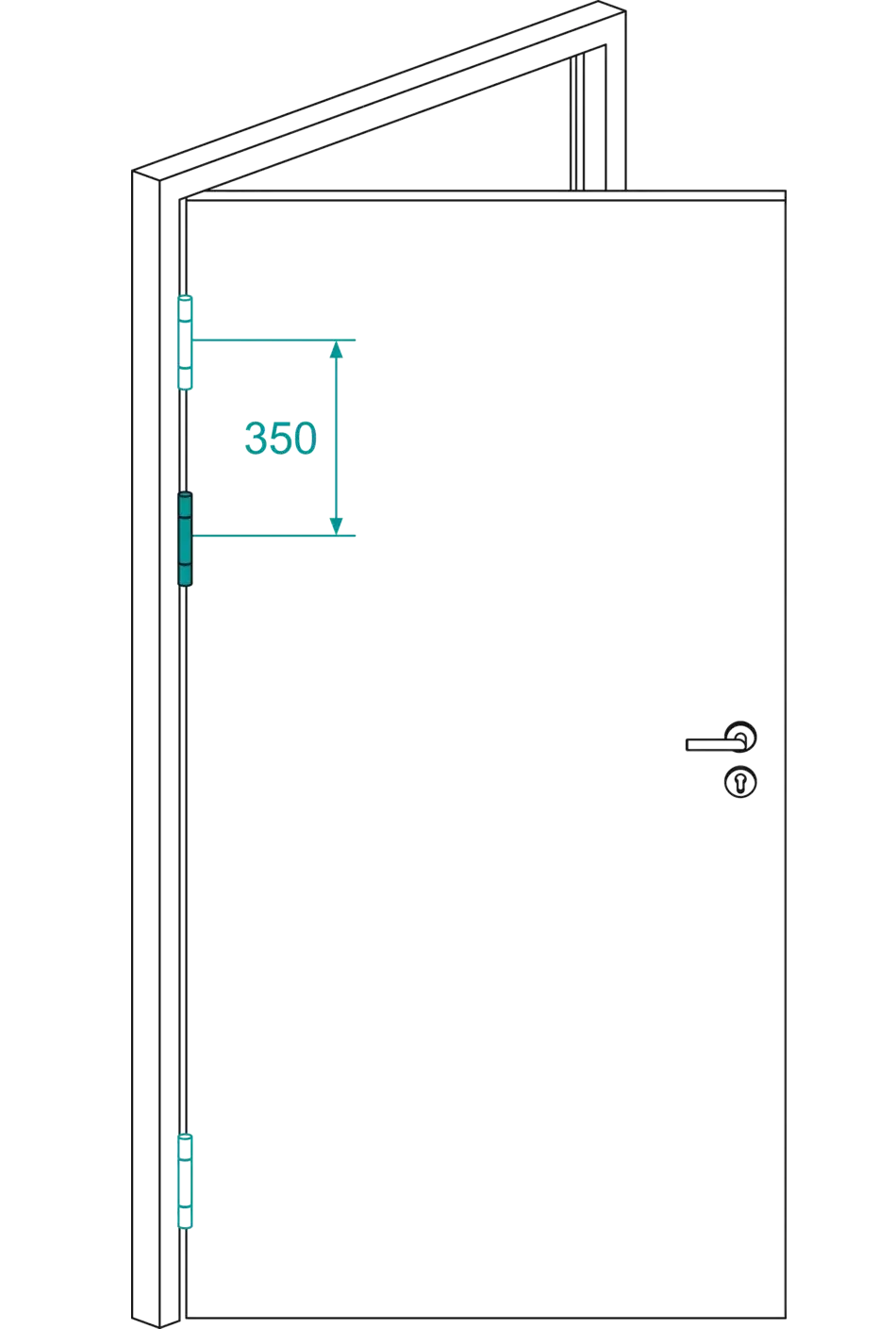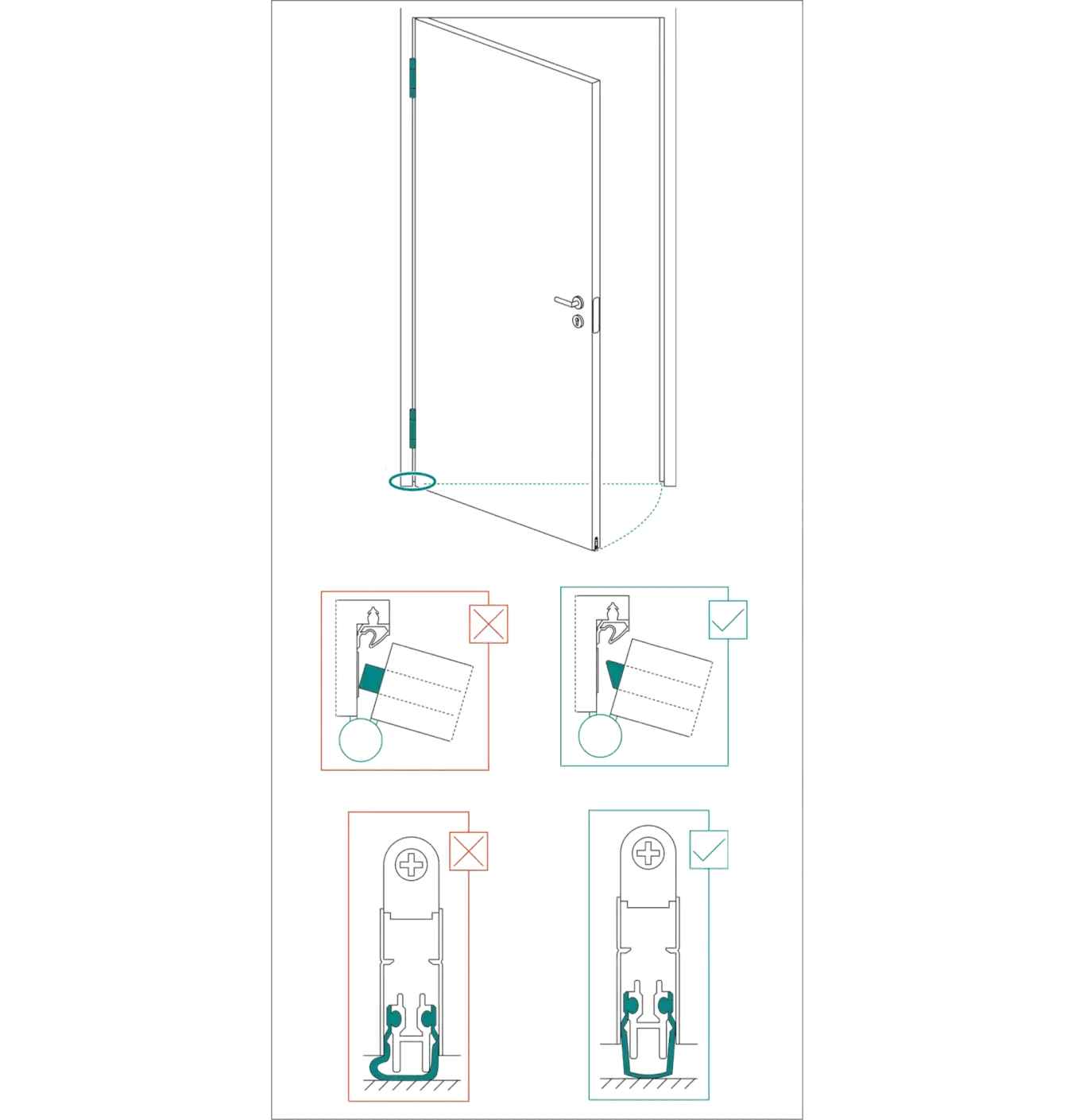When selecting or specifying a hinge, it is often the case that the load alone is assumed to be the door weight. However, the load on the hinge can often be many times greater than the door weight due to various factors.
Even considering these different criteria, an additional reserve should be always accounted for when selecting the hinge. Sufficiently dimensioned hinges should be used, especially in public buildings, where doors must be able to withstand special loads due to the frequency with which they are opened and strain that cannot always be accounted for (preschools, hospitals, etc.), even if this would not be necessary in terms of pure door weight. In accordance with the SIMONSWERK installation instructions, a dimensionally accurate and correct stop is always required.
The following criteria must be taken into account when selecting a hinge in order to avoid damage:
- place of use (residential building, public building, school, administrative, barracks, preschools, etc.)
- element material type
- opening frequency
- door dimensions (e.g. extra wide)
- arrangement of the hinges
- installation of the hinges
- outwards opening doors (vestibule)
- door stops
- door closers
- rotary wing drive
- closing sequence control
- wall reveals
The points laid out here are merely guidelines. In practice, considering factors such as the door’s characteristics, frequency of use, location, etc., it may be beneficial to take into account these aspects even with narrow door widths. Each application must be considered individually. In each case, care should be taken to ensure that the hinges are sufficiently dimensioned to account for the surrounding factors.










